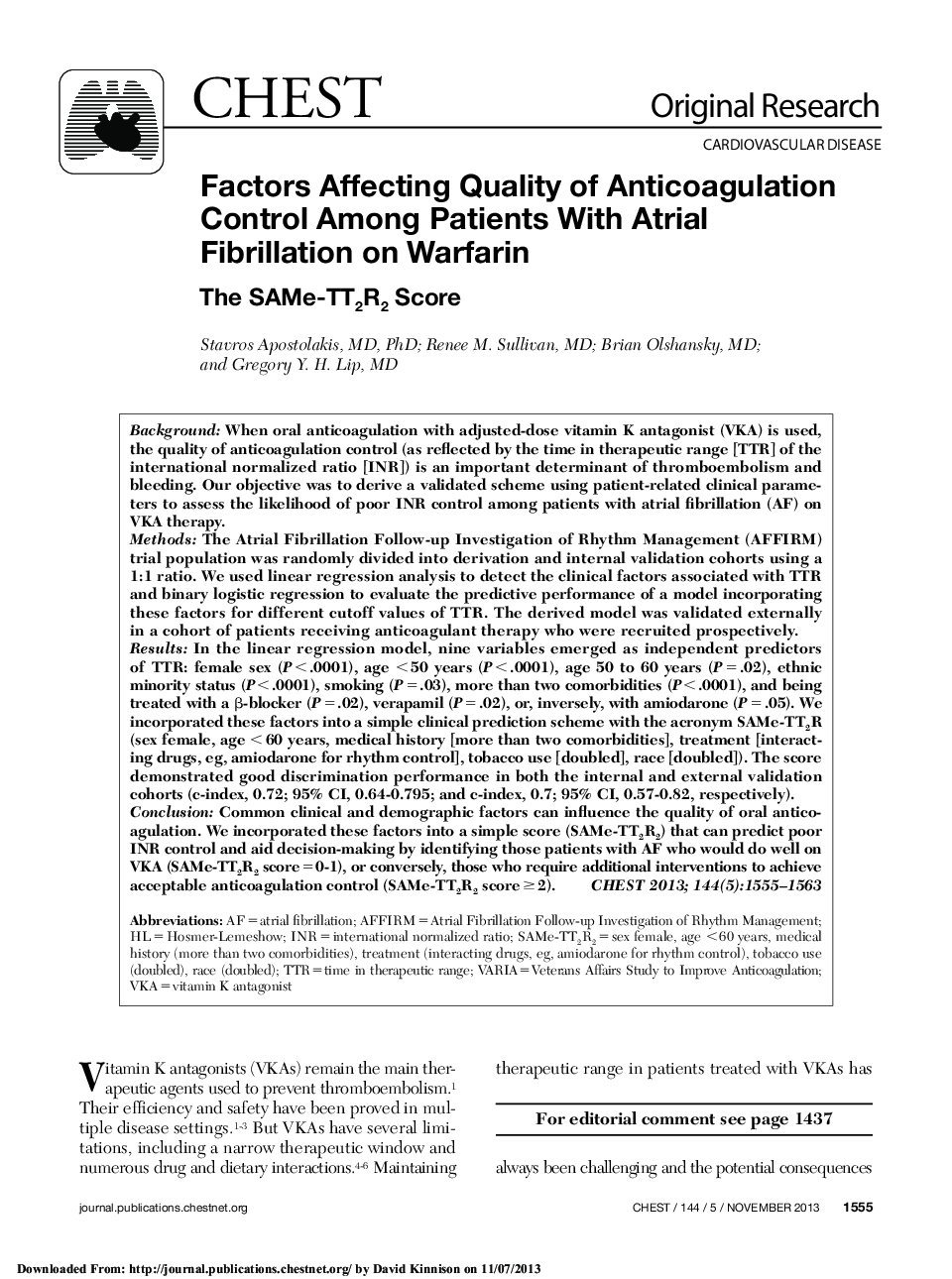| کد مقاله | کد نشریه | سال انتشار | مقاله انگلیسی | نسخه تمام متن |
|---|---|---|---|---|
| 2900575 | 1173333 | 2013 | 9 صفحه PDF | دانلود رایگان |

BackgroundWhen oral anticoagulation with adjusted-dose vitamin K antagonist (VKA) is used, the quality of anticoagulation control (as reflected by the time in therapeutic range [TTR] of the international normalized ratio [INR]) is an important determinant of thromboembolism and bleeding. Our objective was to derive a validated scheme using patient-related clinical parameters to assess the likelihood of poor INR control among patients with atrial fibrillation (AF) on VKA therapy.MethodsThe Atrial Fibrillation Follow-up Investigation of Rhythm Management (AFFIRM) trial population was randomly divided into derivation and internal validation cohorts using a 1:1 ratio. We used linear regression analysis to detect the clinical factors associated with TTR and binary logistic regression to evaluate the predictive performance of a model incorporating these factors for different cutoff values of TTR. The derived model was validated externally in a cohort of patients receiving anticoagulant therapy who were recruited prospectively.ResultsIn the linear regression model, nine variables emerged as independent predictors of TTR: female sex (P < .0001), age < 50 years (P < .0001), age 50 to 60 years (P = .02), ethnic minority status (P < .0001), smoking (P = .03), more than two comorbidities (P < .0001), and being treated with a β-blocker (P = .02), verapamil (P = .02), or, inversely, with amiodarone (P = .05). We incorporated these factors into a simple clinical prediction scheme with the acronym SAMe-TT2R (sex female, age < 60 years, medical history [more than two comorbidities], treatment [interacting drugs, eg, amiodarone for rhythm control], tobacco use [doubled], race [doubled]). The score demonstrated good discrimination performance in both the internal and external validation cohorts (c-index, 0.72; 95% CI, 0.64–0.795; and c-index, 0.7; 95% CI, 0.57–0.82, respectively).ConclusionsCommon clinical and demographic factors can influence the quality of oral anticoagulation. We incorporated these factors into a simple score (SAMe-TT2R2) that can predict poor INR control and aid decision-making by identifying those patients with AF who would do well on VKA (SAMe-TT2R2 score = 0–1), or conversely, those who require additional interventions to achieve acceptable anticoagulation control (SAMe-TT2R2 score ≥ 2).
Journal: Chest - Volume 144, Issue 5, November 2013, Pages 1555–1563